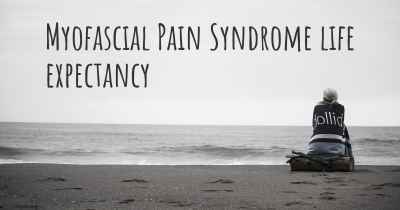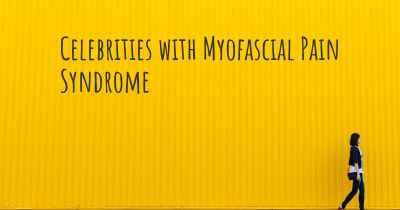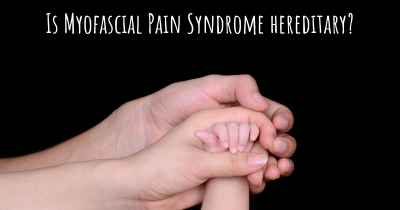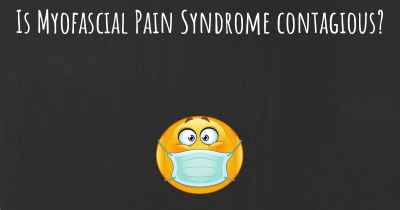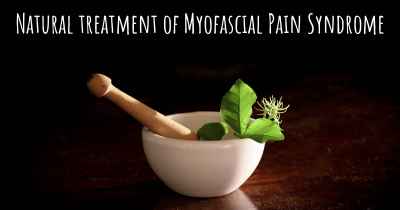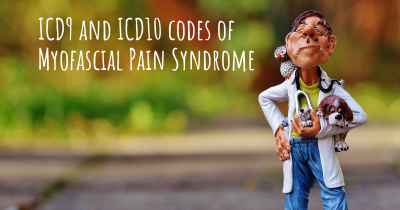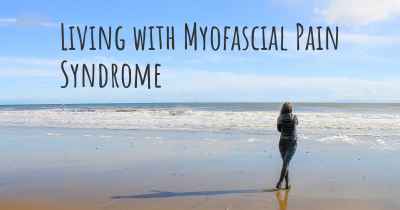Which advice would you give to someone who has just been diagnosed with Myofascial Pain Syndrome?
See some advice from people with experience in Myofascial Pain Syndrome to people who have just been diagnosed with Myofascial Pain Syndrome
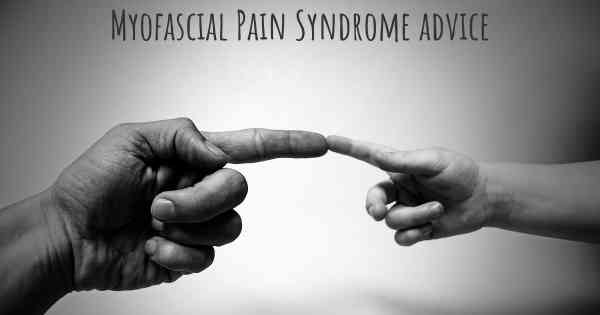
Myofascial Pain Syndrome (MPS) can be a challenging condition to deal with, but with the right approach and management strategies, you can effectively manage your symptoms and improve your quality of life. Here are some important pieces of advice to consider:
1. Educate Yourself: Take the time to learn about MPS, its causes, symptoms, and treatment options. Understanding the condition will empower you to make informed decisions about your health and treatment plan.
2. Find a Knowledgeable Healthcare Provider: Seek out a healthcare provider who specializes in pain management or has experience with MPS. They will be able to provide you with an accurate diagnosis and develop a personalized treatment plan tailored to your specific needs.
3. Follow Your Treatment Plan: It is crucial to adhere to the treatment plan prescribed by your healthcare provider. This may include a combination of therapies such as physical therapy, medications, trigger point injections, or alternative treatments like acupuncture or massage therapy. Consistency is key to achieving positive results.
4. Manage Stress: Stress can exacerbate MPS symptoms. Explore stress management techniques such as deep breathing exercises, meditation, yoga, or engaging in hobbies and activities that help you relax and unwind.
5. Practice Good Posture: Poor posture can contribute to muscle imbalances and trigger MPS symptoms. Be mindful of your posture throughout the day, especially when sitting or standing for extended periods. Consider using ergonomic supports, such as lumbar rolls or standing desks, to maintain proper alignment.
6. Incorporate Gentle Exercise: Engaging in regular, low-impact exercises can help improve blood flow, reduce muscle tension, and enhance overall well-being. Consult with your healthcare provider or a physical therapist to develop an exercise routine that suits your abilities and limitations.
7. Use Heat and Cold Therapy: Applying heat or cold to affected areas can provide temporary relief from pain and muscle tension. Experiment with both heat packs and cold packs to determine which works best for you. Remember to use a barrier, such as a towel, to protect your skin from extreme temperatures.
8. Practice Self-Care: Take care of your body and mind by prioritizing self-care. This may involve getting enough sleep, eating a balanced diet, staying hydrated, and engaging in activities that bring you joy and relaxation.
9. Seek Support: Living with MPS can be challenging, both physically and emotionally. Consider joining support groups or seeking counseling to connect with others who understand your experiences and can provide valuable support and guidance.
10. Monitor Your Symptoms: Keep a journal to track your symptoms, triggers, and any patterns you notice. This information can help you and your healthcare provider identify potential triggers and adjust your treatment plan accordingly.
11. Be Patient: Managing MPS is often a journey that requires patience and perseverance. It may take time to find the right combination of treatments that work best for you. Stay positive and trust that with time and proper management, you can experience improvements in your symptoms.
Remember, this advice is not a substitute for professional medical guidance. Always consult with your healthcare provider for personalized advice and treatment options.
1. As much as possible reduce stress in your life. Get rid if not remove toxic people in your life. If you find yourself getting angry or upset, take a deep breath and try to detach yourself emotionally from the situation. By the way, I have discovered or realized that being in pain for so long can make you more emotional and sensitive, well, at least in my experience. It seemed the tender points in my muscles have extended to my emotions..
2. Do deep breathing exercises. You can ask your PT or other health care provider to teach you or search trusted sources for this.
3. Listen to your body, learn how much can your body take and when to stop when doing chores and other activities and even when doing nothing
4. Take hot showers first thing in the morning when stiffness is worse.
5. Do gentle exercises regularly and hot compress.
6. Observe proper posture at all times and do not stay in same position for a long time
7. I get shockwave and laser treatment during my PT sessions
8. Eat healthy, spend time with supportive love ones and nature.
7. Make your bed and bedroom comfortable and soothing for you
8. Surround yourself with things that spark joy, and
9. Don't just rely on your doctors and PT to get better, be active in finding ways to get better
Posted Mar 14, 2022 by JonahT 1060
